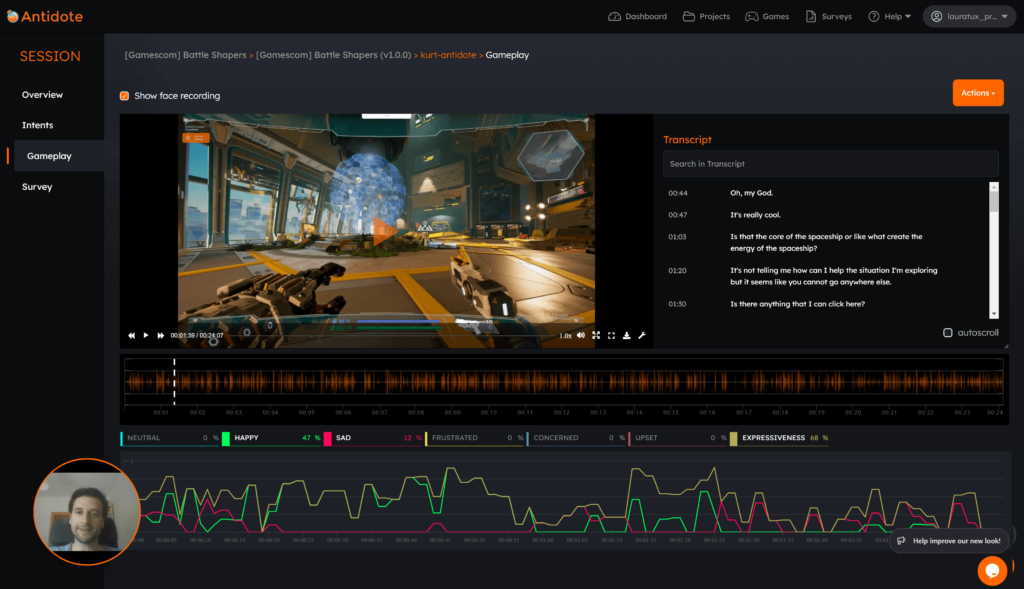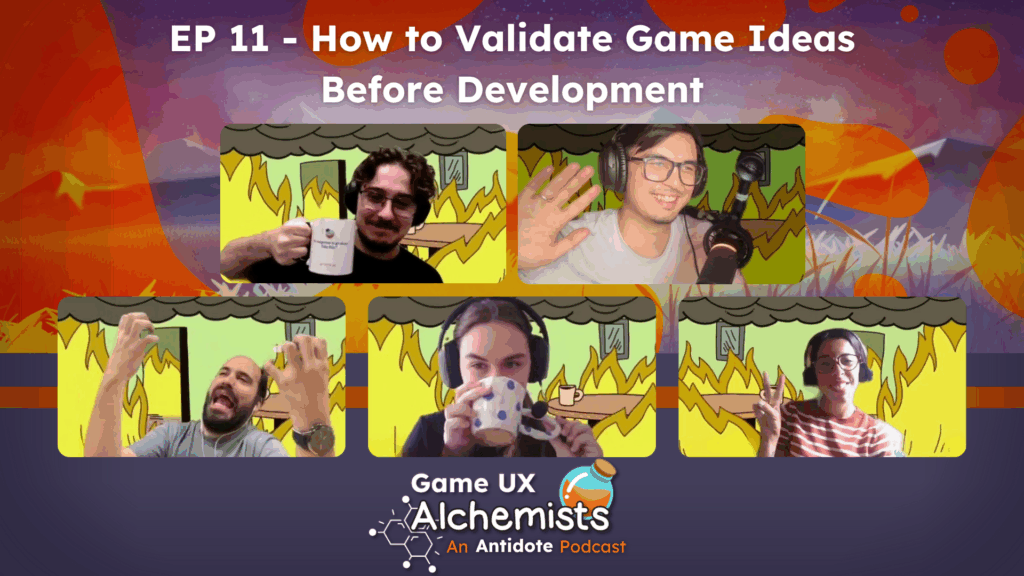One of the biggest debates in User Research is whether you should run moderated or unmoderated playtests.
Well, both approaches have their place, but the ultimate choice depends on what you’re trying to learn.
In this article, I’ll walk you through when each approach works best and help you decide which method serves your research goals.
When Live Moderation Makes Sense

Live moderation is genuinely powerful when you need it.
There’s something valuable about observing player behavior in real time, asking follow-up questions in the moment, and getting immediate clarification on confusing reactions.
If you’re conducting formal usability testing where you need to guide players through specific tasks or scenarios, live moderation is essential. When you’re testing complex systems that might require explanation or when players get genuinely stuck and need help to continue, having a moderator there can save the entire session.
I’ve also found live moderation helpful when you’re conducting comparative studies, where you need to guide players through multiple game versions systematically.
The key is having a very clear reason for being there.
If you can articulate exactly why live moderation serves your research goals better than unmoderated testing, then it’s probably the right choice.
The Observer Effect Problem
But here’s what I’ve learned from 10+ years of helping studios organize research studies:
The moment players know someone is watching, everything changes.
They start explaining their thought processes out loud when they normally wouldn’t. They second-guess instinctive reactions. They try to be “good” test participants by finding problems or giving feedback they think you want to hear.
Some players even start performing, trying to be entertaining or insightful for their audience.
Think about your own behavior.
If you knew someone was taking notes on your every move while you played a game, would you act the same way you do when you’re alone on your couch? Probably not.
This observer effect can be particularly problematic when you’re trying to understand intuitive gameplay. If your goal is to see whether players naturally understand your mechanics or UI, having them overthink every action because they feel watched defeats the purpose.
The Authentication vs. Insight Trade-off
This creates an interesting tension in research design.
Live moderation gives you richer qualitative insights through real-time questioning and observation. But unmoderated testing gives you more authentic player behavior.
The question becomes: what’s more valuable for your specific research goals?
If you’re trying to understand why players struggle with a particular feature, live moderation lets you dive deeper into their thought process. But if you want to know whether players intuitively understand your onboarding flow, unmoderated testing shows you their natural behavior without the influence of being observed.
I’ve seen research teams get seduced by the richness of live moderation data without considering whether that data reflects how players would actually behave in the wild.
The insights feel more substantial because you can ask follow-up questions and get detailed explanations, but they might not represent genuine user behavior.
When to Step Back

In my experience, if you don’t have a compelling reason to actively moderate a session, it’s often better to step back and let players experience your game naturally.
This is especially true when you’re testing emotional responses to gameplay. How someone reacts to a challenging boss fight, a plot twist or a frustrating puzzle is going to be very different when they’re alone versus when they know someone is analyzing their reactions.
Unmoderated sessions also give you behavioral data that’s harder to argue with.
When players consistently get confused at the same point in your game during unmoderated testing, you know it’s a real problem, not an artifact of the testing environment.
Making the Right Choice for Your Goals
The decision really comes down to aligning your method with your research objectives.
- Testing specific task completion and need to understand where players get stuck? Live moderation helps you guide them through and understand their reasoning.
- Want to see genuine first impressions and natural player behavior? Unmoderated testing eliminates observer bias.
- Need to validate whether your tutorial effectively teaches mechanics? Unmoderated testing shows you whether players can actually learn without someone there to help.
- Testing complex features that might require explanation or technical support? Live moderation ensures you don’t lose valuable sessions to technical issues.
The most successful research studies I’ve seen use both approaches strategically, choosing the method that best serves each specific research question rather than defaulting to one approach for everything.
Finding the Middle Ground

If you’re torn between the two approaches, there are some hybrid options worth considering.
You can start sessions unmoderated to capture natural first impressions, then switch to moderated mode for follow-up questions. Some researchers observe silently without interacting, only jumping in if players get completely stuck or encounter technical issues.
Another approach is recording unmoderated sessions and then conducting separate follow-up interviews to get the qualitative insights you need without affecting the original behavior.
The Bottom Line
Live moderation is a powerful tool, but like any tool, it’s only valuable when used for the right job.
If you can clearly articulate why active moderation serves your research goals better than authentic player behavior, then moderate away.
But if you’re moderating just because it feels more involved or because you’re curious about what players are thinking, consider whether that curiosity is worth potentially compromising the authenticity of their behavior.
Your players are going to experience your game alone, without a researcher there to guide them or answer their questions.
The question here isn’t whether live moderation is good or bad. The question is whether it’s right for what you’re trying to learn.
If you’re ready to try unmoderated testing and need a platform that makes it easy to run these studies, Antidote can help.
We can handle both moderated and unmoderated studies, so you can choose the right approach for each research question 😊



